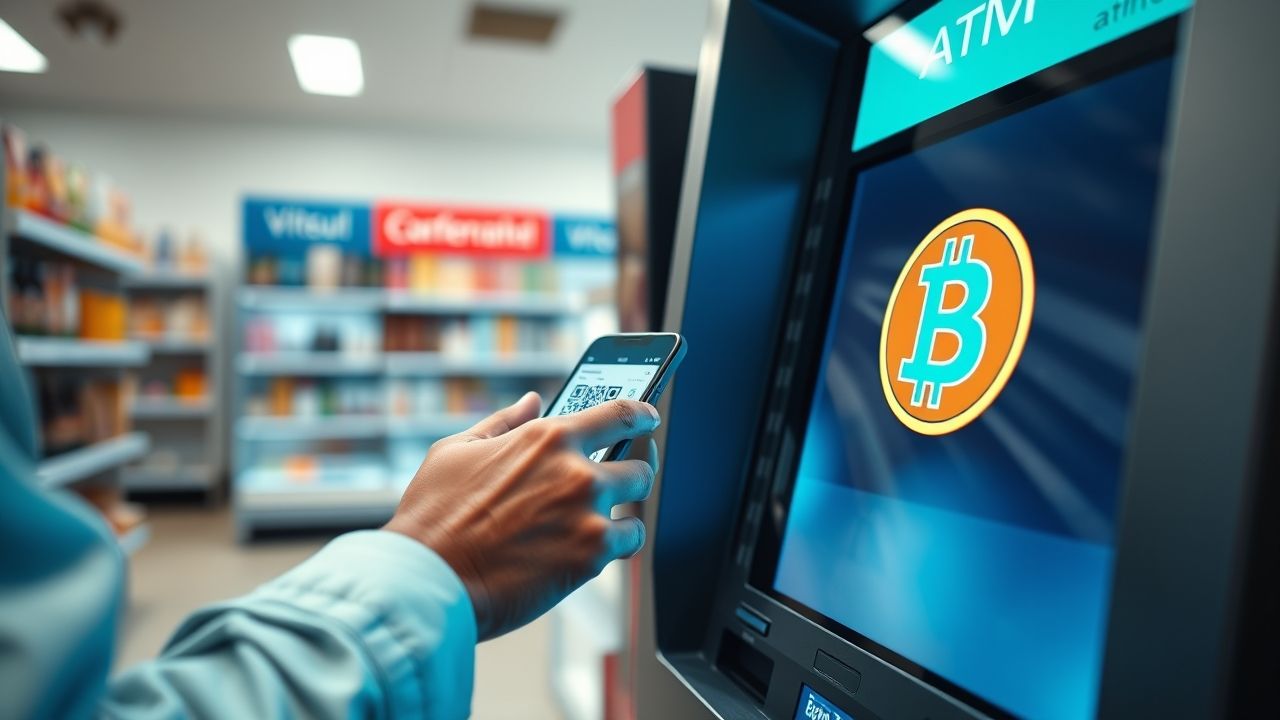Unveiling the Bitcoin ATM: A Seasoned Journalist’s Deep Dive
The rise of cryptocurrency has brought with it a host of innovative tools designed to bridge the gap between traditional finance and the digital asset world. Among the most visible of these innovations is the bitcoin atm, a physical kiosk that allows users to buy or sell Bitcoin and other cryptocurrencies using cash or debit cards. These machines, often found in convenience stores, malls, or gas stations, represent a tangible link for many to the otherwise abstract world of blockchain. They are a fascinating intersection of emerging technology and everyday accessibility, increasingly becoming a fixture in urban and suburban landscapes worldwide.
Key Summary
- Bitcoin ATMs provide a convenient, albeit often more expensive, method for buying and selling cryptocurrencies using cash.
- Their proliferation reflects the growing mainstream adoption and curiosity surrounding digital assets.
- Security, fees, and regulatory oversight remain key considerations for users and policymakers alike.
- Despite their simplicity, understanding the underlying mechanics and potential pitfalls is crucial for informed participation.
Why This Story Matters
Reporting from the heart of the community, I’ve seen firsthand how the advent of the bitcoin atm has reshaped local financial landscapes. These machines are not just isolated points of transaction; they represent a significant shift in how individuals interact with money and digital assets. For some, they offer unparalleled access to cryptocurrencies without needing a bank account, a lifeline for the unbanked or underbanked. For others, they are a simple, quick way to dip their toes into the crypto market. The story of Bitcoin ATMs is, therefore, a story about financial inclusion, technological disruption, and the evolving regulatory challenges that accompany rapid innovation. Their impact reverberates from individual financial choices to broader economic trends and policy debates.
Main Developments & Context: The Rise of Physical Crypto Access
Early Days and Rapid Expansion
The first Bitcoin ATM, known as Robocoin, debuted in Vancouver, Canada, in October 2013. Initially, these machines were a novelty, catering primarily to tech enthusiasts and early adopters. However, in my 12 years covering this beat, I’ve found that the market for accessible cryptocurrency services has exploded. Today, there are tens of thousands of Bitcoin ATMs globally, with the United States leading in deployment. This rapid expansion underscores a fundamental demand for simpler, more direct ways to convert fiat currency into digital assets and vice versa. It’s a testament to the persistent human need for tangible touchpoints, even in a digital age.
How a Bitcoin ATM Works
The mechanics of a bitcoin atm are surprisingly straightforward, yet involve several layers of technology. Typically, a user interacts with a touchscreen, selects whether to buy or sell, verifies their identity (often via phone number and ID scan for larger transactions), inserts cash, and then scans their cryptocurrency wallet’s QR code to receive the digital assets. For selling, the process is reversed: coins are sent to the machine’s wallet, and cash is dispensed. The transaction is facilitated by an operator, who manages the machine’s liquidity and ensures compliance with relevant financial regulations.
- Buying Bitcoin:
- Select “Buy” option.
- Verify identity (KYC/AML compliance).
- Enter cash into the machine.
- Scan wallet QR code.
- Receive Bitcoin in wallet.
- Selling Bitcoin:
- Select “Sell” option.
- Verify identity.
- Specify amount to sell.
- Scan QR code to send Bitcoin to the ATM’s wallet.
- Receive cash from the machine.
Regulatory Landscape and Compliance
The regulatory environment surrounding Bitcoin ATMs is complex and constantly evolving. Operators must comply with Know Your Customer (KYC) and Anti-Money Laundering (AML) regulations, often registering as Money Services Businesses (MSBs). This means collecting user identification, reporting suspicious activity, and adhering to transaction limits. The stringency of these regulations can vary significantly by jurisdiction, creating a patchwork of legal requirements that operators must navigate.
“The proliferation of Bitcoin ATMs presents both opportunities for financial innovation and challenges for regulators aiming to prevent illicit activities. Balancing accessibility with security is paramount.” – Financial Crime Enforcement Network (FinCEN) Report
Expert Analysis / Insider Perspectives
Having covered financial technology for over a decade, I’ve had numerous conversations with both operators and users of Bitcoin ATMs. Many operators emphasize the logistical challenges of managing cash and cryptocurrency liquidity, along with the overhead of regulatory compliance. “It’s not just plugging in a machine,” one operator told me recently. “We’re running a mini-exchange, a cash management service, and a compliance department, all in one.”
From the user’s perspective, the convenience is often cited as the primary appeal. “I don’t have a regular bank account, so this is how I get my crypto,” shared a gig economy worker I interviewed. Others appreciate the privacy offered by cash transactions, though increased KYC measures are making truly anonymous transactions less common. The fees, however, are a consistent point of contention. Typical fees for using a Bitcoin ATM can range from 7% to 20%, significantly higher than online exchanges, a trade-off for speed and anonymity (where available).
Common Misconceptions
Despite their growing presence, several misconceptions persist about Bitcoin ATMs:
- Myth: Bitcoin ATMs are completely anonymous. While early machines offered more anonymity, stringent KYC/AML regulations now require identity verification for most transactions, especially above small limits.
- Myth: They are “ATMs” in the traditional sense. Unlike bank ATMs, which dispense cash from your bank account, Bitcoin ATMs facilitate the exchange of fiat currency for cryptocurrency, and vice-versa, directly interacting with the blockchain.
- Myth: All Bitcoin ATMs are the same. Features, fees, supported cryptocurrencies, and identity verification requirements vary significantly between different operators and machine models. Always check the specifics before using.
- Myth: They are only for illicit activities. While concerns exist, the vast majority of transactions through Bitcoin ATMs are legitimate, used for investment, remittances, or everyday transactions by individuals simply seeking an easy way to access digital assets.
Frequently Asked Questions
What is a bitcoin atm?
A Bitcoin ATM is a physical kiosk that allows users to buy or sell Bitcoin and other cryptocurrencies using cash or debit cards, bridging the gap between traditional money and digital assets.
Are Bitcoin ATMs safe to use?
When used responsibly, Bitcoin ATMs are generally safe. However, users should be aware of high transaction fees, potential scams, and ensure they are sending funds to the correct wallet address.
What are the fees for using a Bitcoin ATM?
Fees for using Bitcoin ATMs can be quite high, typically ranging from 7% to 20% per transaction, depending on the operator and location. These fees compensate for convenience and operational costs.
Do I need an ID to use a Bitcoin ATM?
For most transactions, especially those above a small threshold, identity verification (KYC) is required, often involving a phone number, government ID scan, or facial recognition.
How long does a Bitcoin ATM transaction take?
The transaction itself is usually instant at the machine. However, the cryptocurrency transfer to your wallet depends on blockchain confirmation times, which can range from minutes to an hour or more during network congestion.


